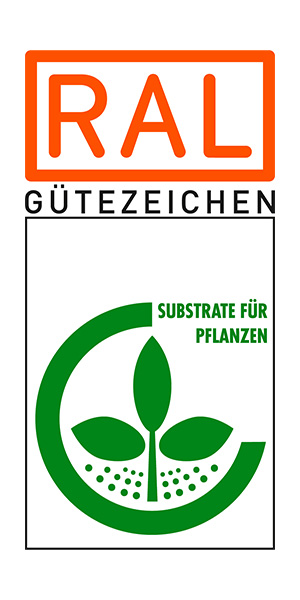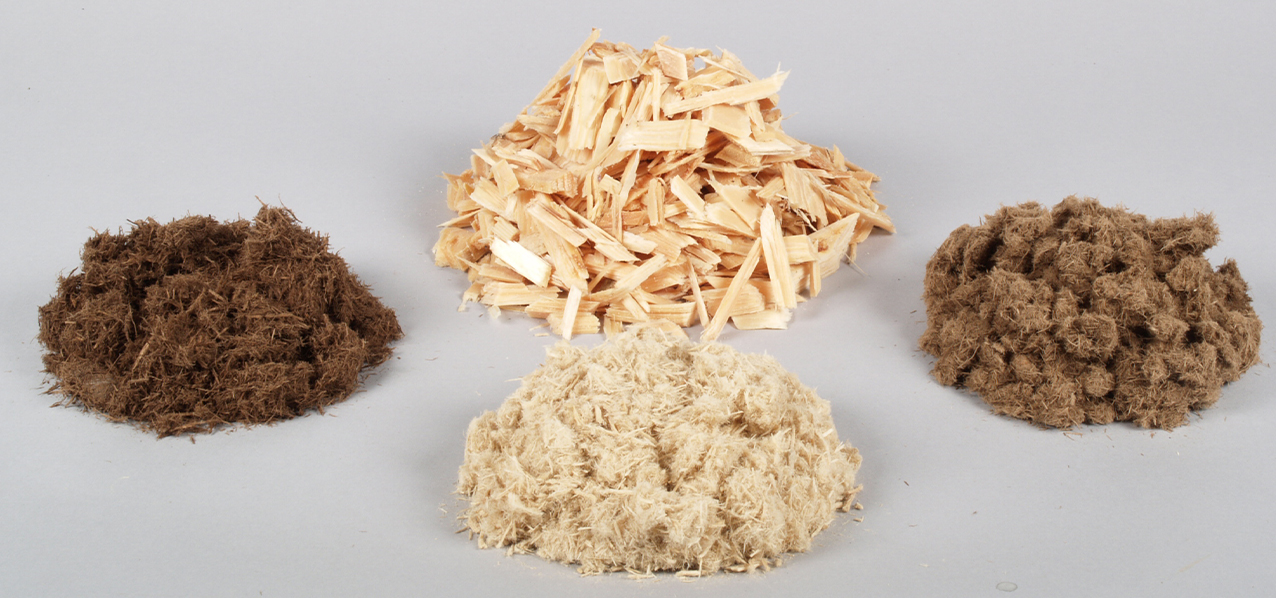Quality criteria – Wood fibre
RAL-certified wood fibre – feedstock
for substrate production
Wood fibres have already been available on a large scale on the German market since the early nineties. The key reason was the benefits wood fibre as a growing media constituent offered for the environment and plant cultivation. RAL Quality Assurance applies to wood fibre from sawmill residues. However, only wood fibres from chemically untreated industrial waste wood containing only a small proportion of bark material may be used in substrates.
Download quality criteria wood fibre
Two different methods can
be used to produce wood fibre:
1. Thermo-physical decomposition in screw presses
In this method, the chips are defibred mechanically. This process creates high temperatures that result in a decomposition of tannins and resins. Organic and mineral substances are added during the impregnation and conditioning processes in order to enhance the properties of the product. They remain permanently mixed with the fibres or are incorporated in the fibre structure. The main purpose of these additives is to stabilise nitrogen (N stabilisation), but they also help to delay fibre decomposition, adjust the nutrient contents and pH value, and enhance the water balance. Via the machine settings, the producer can directly influence the fibre structure and, consequently, the physical properties.
2. Steam explosion method
This method uses a reaction extruder to make wood fibre. First, water vapour is used to create high pressure and a high temperature. This process is followed by a sudden drop in pressure that causes the material to decompose explosively. The physical properties can be exactly defined by the temperature, duration of the treatment and pressure gradient settings. Production in the extruder is followed by a fermentation process in open halls. Temperature and water content in the fibre heaps are exactly defined.
Quality criteria – Wood fibre
RAL-certified wood fibre – feedstock
for substrate production
Wood fibres have already been available on a large scale on the German market since the early nineties. The key reason was the benefits wood fibre as a growing media constituent offered for the environment and plant cultivation. RAL Quality Assurance applies to wood fibre from sawmill residues. However, only wood fibres from chemically untreated industrial waste wood containing only a small proportion of bark material may be used in substrates.
Download quality criteria wood fibre
Two different methods can
be used to produce wood fibre:
1. Thermo-physical decomposition in screw presses
In this method, the chips are defibred mechanically. This process creates high temperatures that result in a decomposition of tannins and resins. Organic and mineral substances are added during the impregnation and conditioning processes in order to enhance the properties of the product. They remain permanently mixed with the fibres or are incorporated in the fibre structure. The main purpose of these additives is to stabilise nitrogen (N stabilisation), but they also help to delay fibre decomposition, adjust the nutrient contents and pH value, and enhance the water balance. Via the machine settings, the producer can directly influence the fibre structure and, consequently, the physical properties.
2. Steam explosion method
This method uses a reaction extruder to make wood fibre. First, water vapour is used to create high pressure and a high temperature. This process is followed by a sudden drop in pressure that causes the material to decompose explosively. The physical properties can be exactly defined by the temperature, duration of the treatment and pressure gradient settings. Production in the extruder is followed by a fermentation process in open halls. Temperature and water content in the fibre heaps are exactly defined.




